Welcome back to Hypericum Heaven! The first two species I addressed had 4 petals. There are only 2 other species in my area with 4 petals. Low St. John's wort-Hypericum stragulum is found in my area, but farther north into the piedmont part of Moore county. I have not encountered it yet. Pineland St. John's- Hypericum suffruticosum is found farther south and east in Bladen, Sampson and Jones counties. Hopefully I'll encounter both of these in the future.
The next 3 I would like to talk about are all quite obscure. Most people would walk by these plants without a second glance. All the blossoms are tiny. They all have 5 petals. So, that's where we start with the key. The flowers have 5 petals. The next question is:
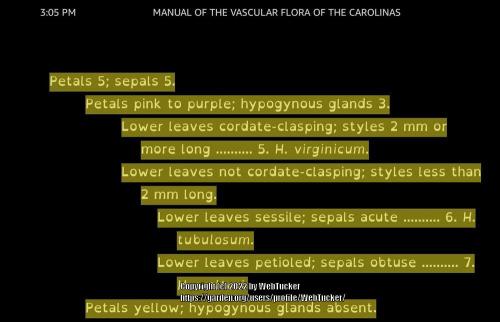
Are the flowers pink to purple or yellow in color? All 3 of these are yellow. The next question is related to the character of herbaceousness or woodiness. All 3 of the species are herbaceous. So we skip ahead in the key to those that are herbaceous.
Our next question is about the leaf veins. Do the leaves have 1 nerve? The answer for 1 of these is yes. Hypericum gentianoides-Gentian-leaved St. John's wort has appressed and one nerved leaves.
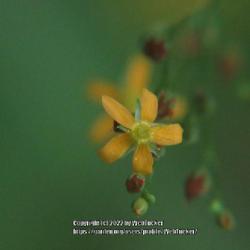
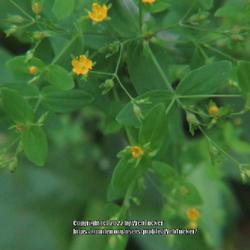
The next member of this group I want to talk about is very similar to the last. In fact, the key that I posted before includes the next species. You may have noticed that in the last post the species name STANS was highlighted. This is a synonym for the accepted name, Hypericum crux-andreae-St. Peter's Wort.
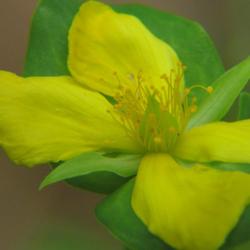
After an amazing spring with no end of flowers popping up all over the place, July has been positively "dog days" in my searches for native plants to photograph. I spent the last 5 or 6 days riding around on my bicycle, and in my truck, and sometimes in my truck with my bike in the back, looking for plants. I went to 3 different counties, four different locations and rode my bicycle over 30 miles looking for new species to enter into my log.
I have not made an actual count of species added in July. I think it's probably less than 20. I know that's not bad, and I feel pretty good about it, but I like to get more than that on these rides. In the past these rides were for the exercise mostly, and looking for the plants secondarily. Now it's just the opposite. Since I haven't spent as much time logging in plants I decided to write about 1 of my favorite groups, the Hypericums. The following is a link to what I have logged so far.
https://garden.org/lists/view/... ![]()
The 1968 edition of "The Manual of the Vascular Flora of the Carolinas" lists 30 species of the genus Hypericum. I've seen 6 of them this spring and summer and 1 last fall. Though these plants are not particularly conspicuous (Some of them are so small that most people wouldn't notice them as they walk along!), and don't always have showy blossoms. They are still one of my favorite groups of plants. Eventually, I hope to see all 30 (and of course photograph them), but I don't think that's likely.
Some members of this genus, known as the St. John's wort(s) are considered to have medicinal qualities, and you can even buy supplements of St. John's wort online, in your local pharmacy and grocery stores.
Here's an excerpt from an ad I found on Amazon:
"Saint John's Wort is a traditional herb commonly used in wellness practices around the world. This flowering plant is well-known for its blossoming yellow flowers, which are a source naturally occuring antioxidant flavonoids and other botanical nutrients."
Unfortunately it does not have a nice effect on livestock, particularly cows. This plant can be a real problem for cattle farmers. If the weed is found in the pastures where cattle graze it must be eradicated, otherwise it will have deleterious effects on the cattle.
Wiki excerpt:
"In large doses, St John's wort is poisonous to grazing livestock. Behavioral signs of poisoning are general restlessness and skin irritation. Restlessness is often indicated by pawing of the ground, headshaking, head rubbing, and occasional hindlimb weakness with knuckling over, panting, confusion, and depression. Mania and hyperactivity may also result, including running in circles until exhausted."
It would be interesting to hear from members who have had either positive or negative experiences with Saint John's wort. Either you raise cattle/livestock and have had problems with it in your pastures or maybe you have had a positive medicinal effect from the supplement you can buy. Either way it would be interesting to hear about these experiences.
Back to the botany part of this blog entry. I learned quite a lot as I came across each, photographed and keyed out these different species of Hyperpicum. Now, I have never claimed to be a professional botanist by any means. And I'm sure that's obvious to some of the members. I did take plant taxonomy in graduate school, and made an 'A'. During that course, we were required to collect 100 native plants in a collection (I still have it). That was quite a learning experience.
With that said, I have previously spoken about my method for determining specific epithets of genera. I usually start with the key and if the key is too damn complicated then I move to my backup method. In the course of working back and forth between these 2 methods, I can usually figure it out. If not, you know where it gets posted. My other method begins with geographic distribution. So let's start there.
Of the 30 species that "live" in the 1968 version of Radford, only about 2/3 are found in the area where I spend most of my time trasping around the woods or bike riding about the streets and trails of my area. Briefly here's how I go about it. I put down a check mark and an X mark on a piece of paper, and then I start going through the descriptions of the plants. As I come across 1 that seems right I put that number next to the 'check' mark and if it's wrong next to the'X'. After I completed my 1st survey of geographic distribution, the field usually narrows considerably. In this case from 30 to approximately 20 species in my list.
Hopefully the list is not too cumbersome. In example, if you were doing a member of the genus Poa, the grasses, then you will encounter dozens of species within that genera. Daunting, to say the least.
So what does that mean. That means that now I only have to eliminate 19 of 20, as I encounter " new" examples. Not nearly as hard as working with 30, and after the next step It will be even less.
Step 2:
Plants bloom at specific times of the year. So this makes the next step easy. Go through the keys, and look at the blooming dates or if you have fruit the fruiting dates. After you've been through the key, and eliminated any plants that don't match for dates of blooming or fruit, then you've pared your list even further. As my favorite detective, Sherlock Holmes, advised, on the subject of deductive reasoning, "Whenever you have eliminated the impossible, whatever remains, however improbable must be the truth."
I didn't use this method for my first. In fact I almost threw up my hands from the beginning because I felt so helpless at the time. You folks at NGA figured it out for me. In retrospect I know I could have figured it out now. It's the easiest one of all to i.d.
St. Andrew's Cross (Hypericum hypericoides)

Okay, this is sort of a continuation of one of my first entry. That entry was about how media has changed since I took up my old hobby again. This time I'm going to address the quality issue that you get when you use a digital phone camera versus using a digital camera or a DSLR.
When I began to get interested in plant photography again, fall of 2021, all I had was a digital camera that came with my Samsung A10 smart phone. I was thrilled to be using a camera again, but I had very little experience using a camera/phone (Heck, I bought my 1st smartphone in August of 2021, way behind the times communication wise). Needless to say I had a lot to learn about using phone-cameras or camera-phones.
As I continually submit photographs to NGA, I see my old photographs from last fall and how they compare with the photographs that I have taken since I purchased my digital camera. I've done my best to retake as many of those pictures as opportunities arise. Here are a couple of examples of before and after.
In the fall, I submitted this picture of Spanish needles:
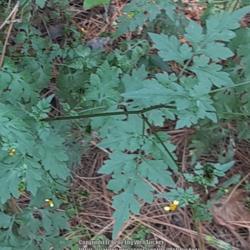
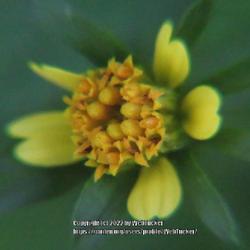
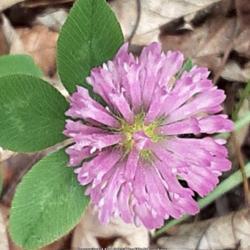
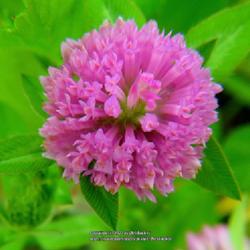
To date no results. I guess this experiment Failed. It's been over a month and I have seen absolutely nothing. I'm gonna try again. I'm going get some better potting soil. I think that might be the problem. I used cheap potting soil. Please let me know if you have any ideas about how to go about my next trial.
![]()